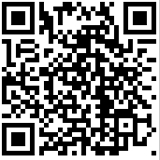来源: 类型:
Textile quota will phase out globally on Jan. 1, 2005; free trade in textile shall prevail. In order to create the good trading environment, promote sound, stable and sustainable development of textile export of our country, Chinese Government has made a study on opinions and suggestions of the trade organizations and textile and clothing enterprises. Recently, spokesman of MOFCOM ChongQuan accepted an interview on this question.
Q: Textile quota will phase out globally on Jan. 1, 2005, what is your comment?
A: According to WTO agreement on textiles and clothing, the quota system that has governed textile trade for four decades will phase out globally on Jan. 1, 2005, which is an important achievement of Uruguay Round trade talk liberalization, and the textile integration is the trend of the times and accords with every member's long-term benefit; It is also positive for disposing resources effectively worldwide, promoting technological progress of textile industry and structural adjustment, and establishing fair free trading environment. After negotiation for 15 years, China has joined WTO under a situation that the right and obligation are balanced; as a member of WTO, China does not merely have right and even have more obligation to maintain and carry out the textile integration achievement. We believe that after textile integration, world textile trade will have new development.
Q: In recent years, Chinese textile industry and textile export develop very fast, what do you think about changes of textile export of our country after the quota phase out?
A: Since our country joined WTO, through participating in the economic globalization, textile industry, a traditional pillar industry of our country has got some development, the competition advantage of the textile of our country is more obvious, making contributions to economic development and social stability of our country. Our country has already become a big country of the textile production, consumption and export.
However, while waiting for the textile integration, we must know integration also brings challenges. As for international situation, trade protectionism directly against Chinese textile trade brings numerous uncertain factors to textile export of our country, making our country face the complicated international environment. As for domestic situation, the textile export of our country relies mainly on OEM, OBM, and lacks own brand. It has already become immediately task to optimize the structure of products and realize the fundamental transition of trade export growth form.
Q: Which measures will Chinese government take to guarantee the smooth transition of the textile integration?
A: In order to carry out the request for "scientific development view", promote the transition of the growth way of the textile export, realize overall, coordination and sustainable development of textile export of our country, create the stable trading environment, and continue keeping and improving textile export's benefit and long-term international competitiveness after quota scraping, Chinese Government adopted the new eight-point measures on the basis of suggestions from industry associations and textile and apparel producers.
First, enforce specific duty with surtax of export duty on some textile. It will help encourage the export of high value-added products and optimize the mix of Chinese textile exports. The tariff rate will be set by considering the conditions of textile manufacturers.
Relevant departments at all levels will improve their services, releasing timely information on textile exports and regulating exports
Third, offer timely information on the investment increase of textile, improve risk warning for textile producers and fend off over-investment and repeated construction.
Forth, The government encourages domestic companies to run businesses abroad and will facilitate their trade and offer favorable policies for textile companies intending overseas investment and getting involved in economic globalization.
Fifth, intermediary organizations will play a greater role, industrial self-discipline will be strengthened, and industry standards will be promoted to help bring Chinese manufacturers' management in line with international practices.
Sixth, popularize ISO9000 Quality System, ISO14000 Environmental Protection Standard, and further promote the operation and administration form of Chinese enterprises to be in line with international standards.
Seventh, various trade promotion measures will be taken to encourage textile and clothing corporations to create their own brands and increase input in research, development and design so that they can enhance their core competency.
Eighth, multilateral and bilateral dialogues and cooperation will be increased among governments, industrial associations and manufacturers so as to safeguard the legitimate rights and benefits of Chinese companies and realize common development.
Q: What’s your idea on development of Chinese textile export in the future?
A: Under the situation of economic globalization, simple quantity growth is not a goal of Chinese textile export; it is our developing direction to catch the integration opportunity, and realize the sustainable development of the textile export. We believe, with joint efforts of enterprises, trade organizations and the government, Chinese textile export can unquestionably realize sound, stable and sustainable development. Meanwhile, we must point out Chinese Government maintains trade liberalization and convenience, objects to trade protectionism, and objects to adopting the unfair, discriminatory treatment to the Chinese products including textile. China will make great efforts to strengthen exchanges and cooperation with various countries and areas, and promote the sound development of international trade.
(Information by Network Center of MOFCOM)



